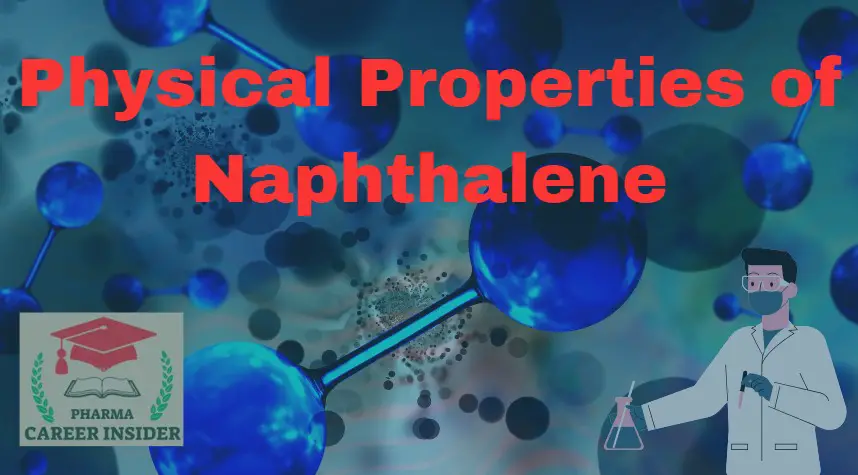Naphthalene is a white solid aromatic hydrocarbon with the chemical formula C10H8. Here are some of its physical properties:
1. Appearance: Naphthalene is a white crystalline solid that can appear colorless or slightly yellowish in impure forms.
2. Odor: Naphthalene has a distinctive, strong odor often described as mothball-like. This odor is characteristic of naphthalene and is commonly associated with mothballs used as insect repellents.
3. Melting Point: The melting point of naphthalene is approximately 80.2°C (176.4°F), at which it transitions from a solid to a liquid state.
4. Boiling Point: Naphthalene boils at 218 degrees Celsius (424 Fahrenheit), changing from liquid to gas.
5. Density: The density of solid naphthalene is 1.145 g/cm³, and liquid naphthalene is 0.978 g/cm³ at its melting point.
6. Solubility: Naphthalene is sparingly soluble in water, meaning it dissolves only to a limited extent. However, it is more soluble in organic solvents such as ethanol, ether, and benzene.
7. Vapor Pressure: Naphthalene has a relatively high vapour pressure, readily evaporating at room temperature. This property contributes to its strong odor.
8. Sublimation: Naphthalene can undergo sublimation, transitioning directly from a solid to a gas phase without passing through the liquid phase under certain conditions.
9. Flammability: Naphthalene can ignite easily in the presence of an ignition source. However, it burns with a relatively low-intensity flame.
These physical properties of naphthalene are useful for various applications, including as a precursor in synthesising other chemicals, as a pesticide, and as a moth repellent. However, it is important to handle naphthalene cautiously due to its toxicity and flammability.




